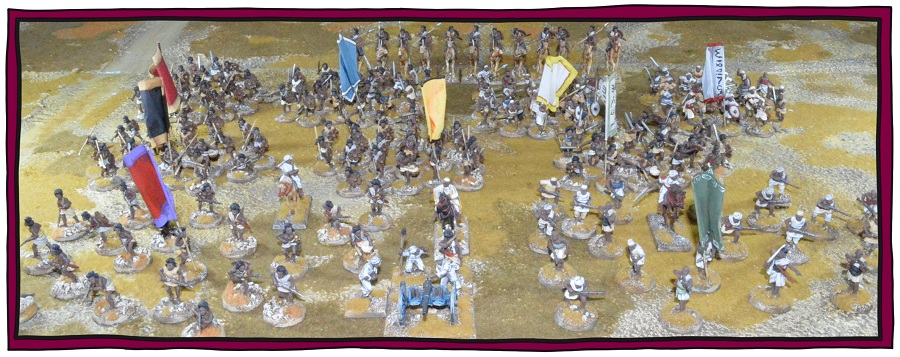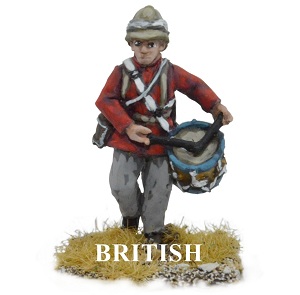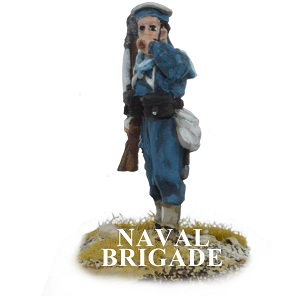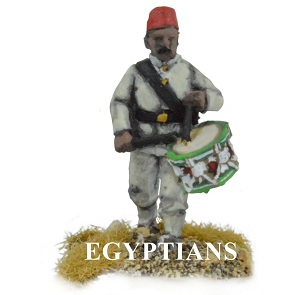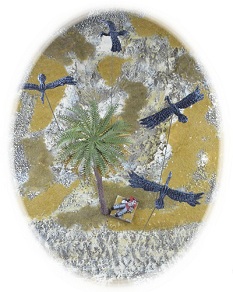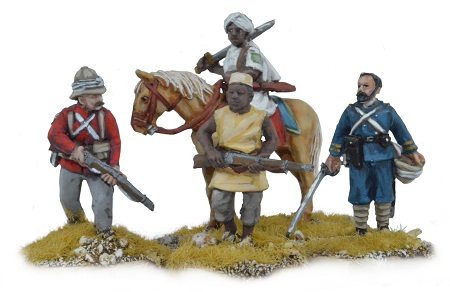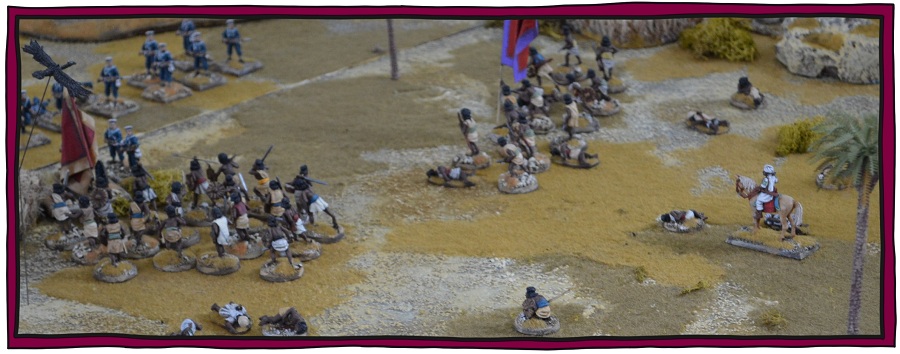
Beja Warriors (below)
The first of three tribal groups. Each tribe is led by a mounted Emir (tribal leader) and contains three native war bands. A standard war band is comprised of a Sheikh (leader) and 19 warriors. The three units shown here are equipped with hide shields and a mixture of swords or spears.
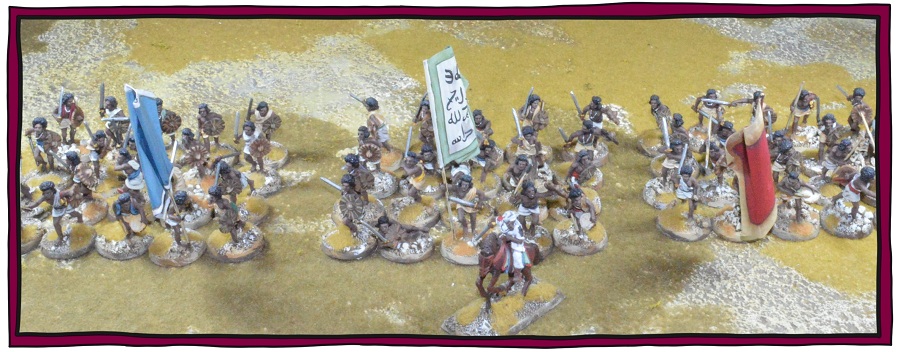
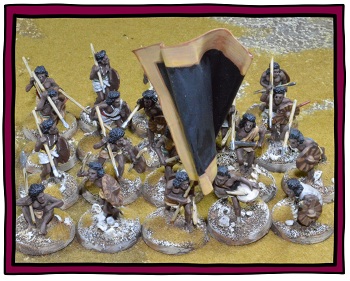
Dervish spear and swordsmen move about the battle field in tight irregular formations, while their rifle armed troops may adopt open order (skirmish) formations. To better highlight the irregular feel/formations of the native troops I decided to base these units on 25mm circular bases instead of the well ordered look you get from the square bases I used with the imperial infantry.
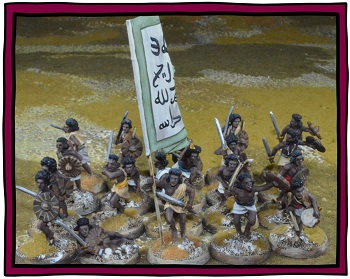
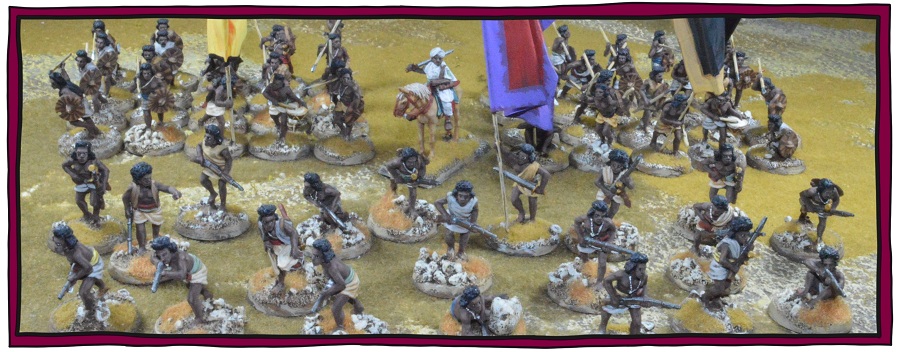
Beja warriors (above).
This second tribal group consists of two bands wielding spears and one sporting captured rifles. Due to the large number of units/figures in this army I decided to paint the middle (cloth belt like section) of the tobe a different colour for each war band. This was to help me quickly identify which figure belonged to which unit. Unfortunately over the years I seem to have forgotten the basic premise behind this concept and thus have ended up with multi coloured waist bands in all my units.
Kordofan warriors (below)
A third and final tribal group composed of Kordofan tribesmen. As with the previous two groups it is led by a mounted Emir and contains three bands of warriors each respectively armed with spears, swords and rifles.
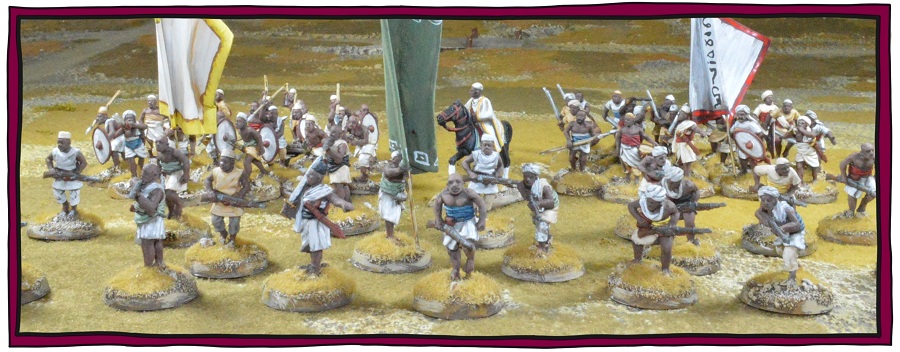
Dervish flags
All flags in this army are hand painted onto 50/50mm square pieces of white paper. Most are plain, at the time of painting I lacked any detailed information on what they should look like. Historically (as far as I can tell and without going into to much detail) their inscriptions were semi-standardised after the fall of Khartoum and carried the Muslim creed on the first three lines followed by the Mahdi’s declaration on the bottom (fourth) line.
- O God, O Merciful One, O Compassionate One.
- O Living One, O Subsisting One, O lord of Majesty & Honour.
- There is no god but God, Muhammad is the Prophet of God.
- Muhammad al-Mahdi is the Successor of the prophet of God
The Warflag web site has a selection of free Dervish flags complete with instructions on how to resize and print these flags out.
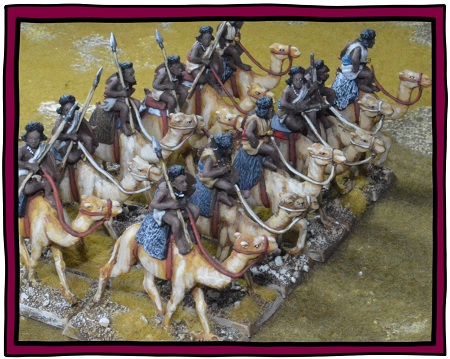
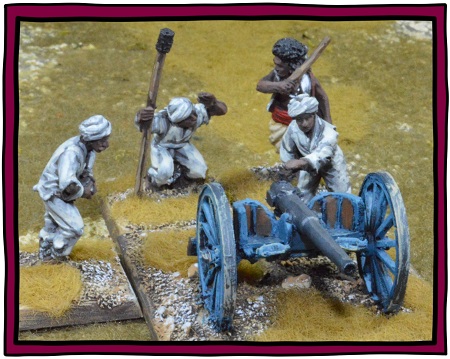
Dervish casualties (Below)
These wounded figures are a mix of Perry (mounted on the round bases) and Old Glory (not based) figures. Unlike imperial troops the Dervish casualties remain in place on the table becoming the equivalent of land mines. Any enemy figure or unit unlucky enough to finish their movement too close to these wounded natives will be attacked and may in turn become a casualty.
Cavalry (Above)
A unit of twelve Fast moving Dervish camel riders. These Perry figures are armed with a mix of spears and rifles. Like the Emir’s below the camel riders are all mounted on 25/50mm bases
Artillery (Left)
This captured Egyptian Krupp gun is manned by three Egyptian prisoners. The fourth man pictured here is a Hadendowah warrior. He is motivating the gun crew with the help of his large hardwood (mimosa) throwing club.
Mounted Emirs (Below)
Unlike the Imperial forces, Dervish war bands receive only one leader (sheikh) per unit. This can prove problematic if their leader is killed by a lucky shot or in melee. All morale checks for leaderless native bands become very hard to pass. This makes the three tribal leaders very handy in deed. Mounted on horse back they can quickly join any leaderless war bands, and thereby boost their chances of passing future morale checks.
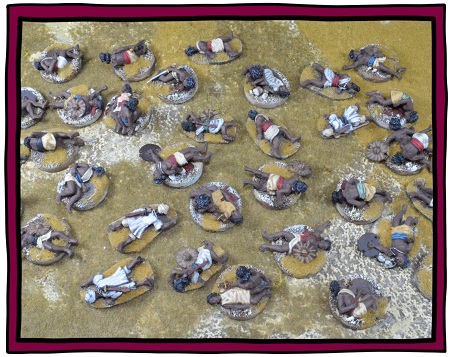
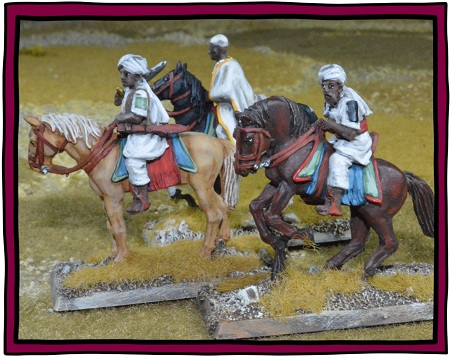
Below is a quick list of the various colour combinations I used when painting this army. Generally my colour choices are governed by what colours I like and have to hand at the time as much as by historical references. It must be said that planning and research is not my strong point. If you’d like your troops to look as historically correct as possible then you might want to do a little more research before you wet your brushes.
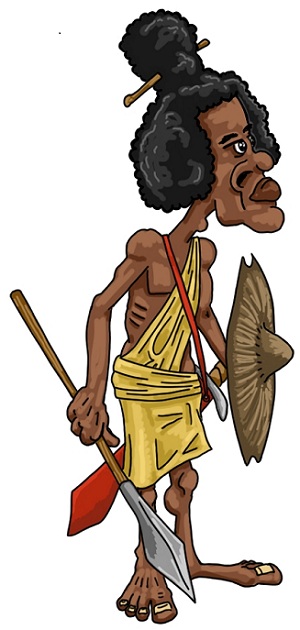
- Hair – The fuzzy-wuzzy or club (as in the deck of cards) hairstyle . Is Black highlighted with Vellejo’s Black Grey.
- Skin – For the skin I used the Reaper Master Series triad of Dark Shadow; Dark Skin; Dark Highlight.
- Tobe – Resembling a short skirt, with the loose ends often draped over one or both shoulders it came in a variety of colours. Descriptions range from white, cream, tan, orange-brown to terracotta. Reaper triads like Bone Shadow; Aged Bone; Polished Bone with a white leather highlight was my main choice here. Other colour combinations include Leather Brown; Tanned Leather; Amber gold highlighted with Vallejo’s Iraqui Sand. A third colour trio included Stained Ivory; Yellowed Bone and Creamy Ivory.
- Shields – Were made from hippopotamus, giraffe and cow skins. My memory fails me here and I can’t recall the exact colours I used. Something along the lines of Reaper’s Woodstain Brown; Earth Brown and Chestnut gold maybe?
- Spears –And mimosa throwing clubs were painted Woodstain Brown; Shield Brown; Chestnut gold, Amber Gold.
- Swords – Their straight, double-edged sword was carried in a red leather scabbard. Illustrations in the book, Go Strong Into the Desert show this to be rather a bright shade of red. Personally I opted for the more leathery red tone given by Vallejo’s Cavalry Brown. Mixing darker and lighter browns for both the shading and highlights on the scabbard.
